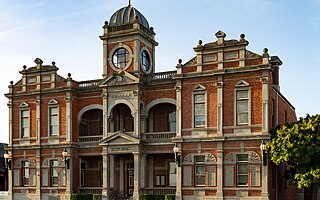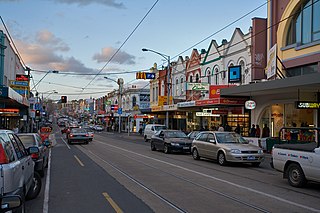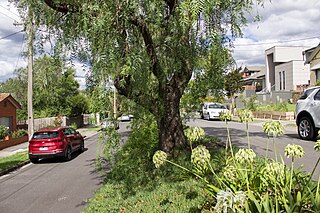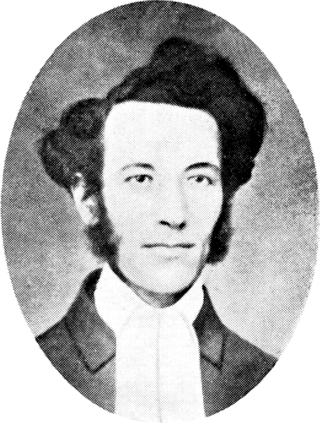
Castlemaine is a town in Victoria, Australia, in the Goldfields region about 120 kilometres northwest by road from Melbourne and about 40 kilometres from the major provincial centre of Bendigo. It is the administrative and economic centre of the Shire of Mount Alexander. The population at the 2021 Census was 7,506. Castlemaine was named by the chief goldfield commissioner, Captain W. Wright, in honour of his Irish uncle, Viscount Castlemaine.

Hawthorn is an inner suburb of Melbourne, Victoria, Australia, 6 kilometres (3.7 mi) east of Melbourne's central business district, located within the City of Boroondara local government area. Hawthorn recorded a population of 22,322 at the 2021 census.

Kew (;) is a suburb of Melbourne, Victoria, Australia, 5 km east from Melbourne's Central Business District, located within the City of Boroondara local government area. Kew recorded a population of 24,499 at the 2021 census.

Sir Arthur William Blomfield was an English architect. He became president of the Architectural Association in 1861; a Fellow of the Royal Institute of British Architects in 1867 and vice-president of the RIBA in 1886. He was educated at Trinity College, Cambridge, where he studied Architecture.

Joseph Reed, a Cornishman by birth, was a prolific and influential Victorian era architect in Melbourne, Australia. He established his practice in 1853, which through various partnerships and name changes, continues today as Bates Smart, one of the oldest firms continually operating in Australia.

Peabody & Stearns was a premier architectural firm in the Eastern United States in the late 19th century and early 20th century. Based in Boston, Massachusetts, the firm consisted of Robert Swain Peabody (1845–1917) and John Goddard Stearns Jr. (1843–1917). The firm worked on in a variety of designs but is closely associated with shingle style.

A coffee palace was an often large and elaborate residential hotel that did not serve alcohol, most of which were built in Australia in the late 19th century.

Gordon W. Lloyd was an architect of English origin, whose work was primarily in the American Midwest. After being taught by his uncle, Ewan Christian, at the Royal

Edward John May (1853–1941) was an English architect.

Clifton A. Hall (1826-1913) was an American architect from Providence, Rhode Island.

John Beswicke (1847–1925) was an architect who practiced in Melbourne between the 1870s and 1915.
Albert Purchas was a prominent 19th century architect and surveyor in Melbourne, Australia.
T. Frank Miller (1863-1939) was an American born architect based in Philadelphia, PA in the late 19th and early 20th centuries. He primarily designed churches and speculation housing in Philadelphia.
Oakden, Addison and Kemp was an Australian architectural firm in Melbourne, Victoria. While it was short lived, existing from only 1887 to 1892, they designed a number of outstanding projects, and all three members designed many more notable projects in earlier and later partnerships.
Clinton Smith was an American architect. He designed many buildings in Middlebury and around Vermont.

The Lutheran Trinity Church in East Melbourne, Australia, is a Lutheran heritage-listed church. It was built in 1874 and was added to the Victorian Heritage Register on 9 October 1974. The church is on Parliament Place, immediately to the south of St Patrick's Cathedral and east of Parliament House. Most church services are in German.

Matthias Goethe, also known as Matthias Göthe or Matthias Goëthe, was pastor of the Lutheran Trinity Church in East Melbourne, Australia, for 14 years from 25 March 1853 to 15 December 1867. He helped form the Evangelical Lutheran Synod of Victoria, was its first president, and established congregations in Australia, the United States and Mexico.
"Boom style" is a recognised architectural development of a late nineteenth-century period of prosperity in which domestic, commercial, public and ecclesiastical architecture burgeoned, particularly in Victoria, Australia, and in other east-coast Australian states. The phrase is sometimes used, uncapitalised, to designate similar opulent architecture of overlapping periods across the late British Empire, and to some extent in America.












